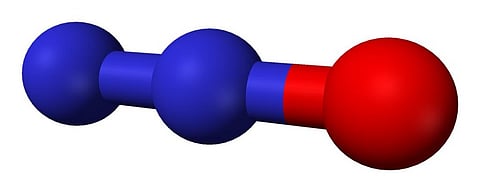

Global atmospheric levels of nitrous oxide (N2O) increased 10 per cent between 2000-2005 and 2010-2015, according to a new research. The absolute value of the increase was 1.6 TgN per year.
N2O is the third-most important greenhouse gas after carbon dioxide (CO2) and methane (CH4). It has the highest global warming potential among the three — 300 times than CO2.
The research also flagged a discrepancy in the way the Intergovernmental Panel on Climate Change (IPCC) estimates N2O levels.
Scientists from several institutes in Europe and the United States, including some from the International Institute for Applied Systems Analysis (IIASA) and the Norwegian Institute for Air Research (NILU), collaborated for the research. Its results were published in the journal Nature Climate Change.
The authors of the paper brought together N2O emission estimates deduced from three global atmospheric inversion frameworks from 1998 to 2016, themselves based on N2O observational data from global networks.
Within this, IIASA contributed data from the Greenhouse Gas and Air Pollution Interactions and Synergies (GAINS) model.
“We see that the N2O emissions have increased considerably during the past two decades, but especially from 2009 onwards,” Rona Thompson, senior scientist at NILU and lead author of the study, said. She did not offer any reason for the increase post-2009.
“Our estimates show that the emission of N2O has increased faster over the last decade than estimated by the IPCC emission factor approach,” Thompson said.
The panel’s estimates were based on the extent of usage of fertilisers and manure by different countries and a default emission factor — the amount of N2O emitted relative to the amount of nitrogen fertiliser used.
The current research found the estimation factor to be 2.3 (+/- 0.6) per cent — much above IPCC’s default 1.375 per cent.
“The larger emission factor, and the accelerating emission increase found from the inversions suggest that N2O emission may have a non-linear response at global and regional scales with high levels of nitrogen input,” according to a IIASA statement.
Authors of the study recommended using more complex algorithms and region-specific emission factors to estimate N2O.
The main reasons for this dramatic increase in N2O levels since the mid-20th century and especially in the past two decades has been the “production of nitrogen fertilisers, widespread cultivation of nitrogen-fixing crops (such as clover, soybeans, alfalfa, lupins, and peanuts) and the combustion of fossil and biofuels,” according to the authors of the research.